Introduction
The Biolite Headlamp 200 (1.75 oz /50 g, $44.95) is an ergonomically designed, competitively priced, feature-rich, rechargeable headlamp. Minimal stitching, careful-material selection, and an easy-to-use adjustment mechanism pair with the Headlamp 200’s weight to make it attractive to anyone seeking a functional, comfortable, economical option over a more powerful, chunky design.

About this Review

This Limited Review is based on my initial testing of the Biolite Headlamp 200, over about ten days of day hiking, trail running, and overnight backpacking in the Tahoe region of the California Sierra in February and March.
Features & Specifications
- weight: 1.75 oz (50 g)
- MSRP: $49.95
- max output: 200 Lumens
- modes: Dimmable white spot, white strobe, dimmable red flood, red strobe
- brightness memory
- lock mode
- battery:
- charges with micro-USB
- 700 mAh lithium-ion
- low: 40 hours
- high: 3 hours
- water resistance: IPX4
- adjustable elastic band
- die-cut, layered fabric head strap with minimal stitching
- tiltable front panel
- comes in grey, green, blue, and red
Performance Analysis

Since this is a Limited Review, I will not present a detailed performance analysis based on long-term use. Instead, I’ve noted performance observations and issues below.
| Criteria | Observations and Issues |
|---|---|
| Beam Pattern and Brightness | The Biolite HeadLamp 200 features a spot mode in white and a flood mode in red. At maximum brightness, the spot mode is 200 lumens. The brightness and spread pattern are more than enough for camp chores and night-hiking on trails and moderately technical terrain. I’ve also used it for nighttime trail-running on unevenly compacted, icy snowmobile paths and while cycling at night. The HeadLamp 200 is slightly too dim to be ideal for these purposes. |
| Comfort and Adjustability | I found the Biolite Headlamp 200 to be the most comfortable headlamp I’ve ever worn. This comfort springs from three sources: the curved, ergonomic backing paired with low profile electronics, a die-cut lycra fabric on the head strap (very minimal stitching), and a tensioning system that distributes pressure evenly around the skull (as opposed to one side or the other). |
| Weight and Price | At 1.75 oz (50 g) and $44.95, the Biolite Headlamp 200 is one of the lightest rechargeable headlamps available (though products like the Nitecore NU 25 have 160 more lumens at a lower price for only slightly heavier weight). There are a few rechargeable headlamps, like the Petzl BINDI, that are slightly lighter at identical lumens. The BINDI is $15 more expensive than the HeadLamp 200. |
| Usability | The Biolite HeadLamp 200’s dimming capability sets it apart from other rechargeable headlamps. I found the ability to dial in brightness precisely for a given task (as opposed to having to choose between two or three presets) valuable when moving over different types of terrain and doing different kinds of tasks around camp. Additionally, while some headlamps are designed to be able to tilt up while wearing them around the neck, the Biolite HeadLamp 200 can only tilt down. According to Biolite engineers, the Biolite Headlamp 200 didn’t need the ability to tilt up because it is expressly designed to be comfortable enough for long-term wear around the head. The Biolite Headlamp 200 sports a dual-tensioning system, one-button mode cycling, and a locking function - features that are relatively ubiquitous on modern headlamps. |
| Battery Life | Biolite’s claimed battery life for the HeadLamp 200 is 3 hours on maximum brightness and 40 hours on minimum brightness. The HeadLamp 200’s dimming capabilities mean the average user will likely experience battery life somewhere between these two extremes. I tested battery life claims at max brightness while hiking and trail running, and found the 3-hour claim to be accurate to plus-or-minus ten minutes depending on the ambient temperature. |
| Recharge Time | I was able to consistently re-charge the Biolite HeadLamp 200 from empty to full within 2-3 hours using a 20,000 mAh portable battery pack (depending on temperature). |
| Quality of Materials and Construction | The Biolite HeadLamp 200 is well-constructed of quality materials. The backing is particularly impressive and feels sturdy but soft against the skin. The charging cable slides in and out of the charging port easily, but the rubber flap that covers this port often requires a little extra manipulation to get it to lay flush again. |
| Durability | I subjected the Biolite HeadLamp to the kind of shocks you’d expect during normal operation - namely drops on mixed-terrain surfaces from three-to-six feet and jostling around inside a pack during the day. As expected, it held up perfectly well to these rigors. The Biolite HeadLamp 200 is rated for IPX4 water resistance - which means it is resistant to splashing water from all directions. This rating is common for headlamps of this type. |
Commentary
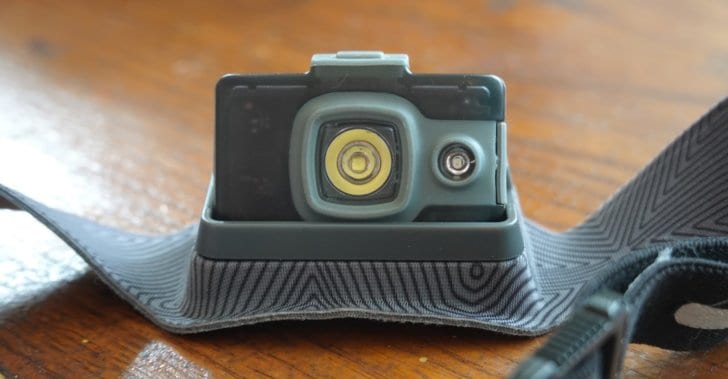
What Makes the Biolite Headlamp 200 Unique
The Biolite Headlamp 200 is not the brightest rechargeable headlamp available, nor is it the lightest (though it comes close). While it is competitively priced and bright for its weight, it doesn’t provide the best lumen-per-dollar value. But the Biolite Headlamp 200 does have two features that set it apart from the expanding rechargeable headlamp crowd.
- Comfort and Stability
- Customizable Brightness Levels
Comfort and Stability
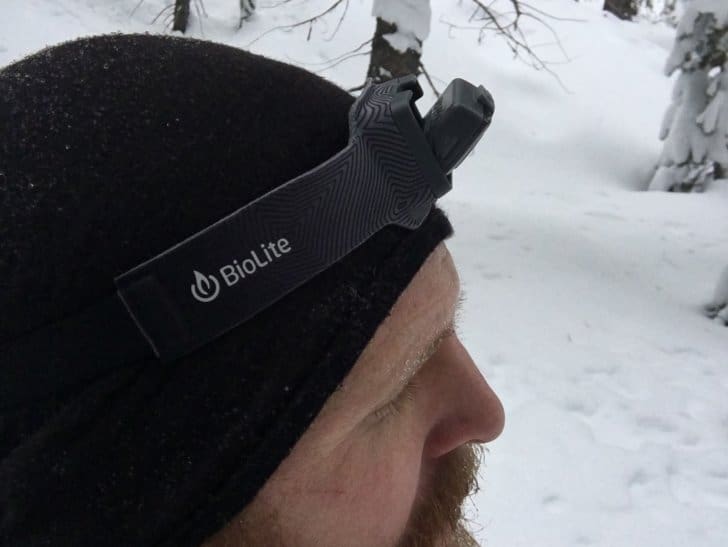
To prepare for this review, I interviewed Mindy Abbruzzi from Biolite’s design and engineering team. From Mindy, I learned that the Biolite team turned to Nike’s high-end cleats for inspiration on the Headlamp 200 project. At first glance, shoes and headlamps may not have much in common. Mindy explained that her team was trying to accomplish a seamless integration between hardware (electronics) and soft-ware (fabrics) akin to how Nike integrates hard metal pieces and soft materials in their sports shoes.
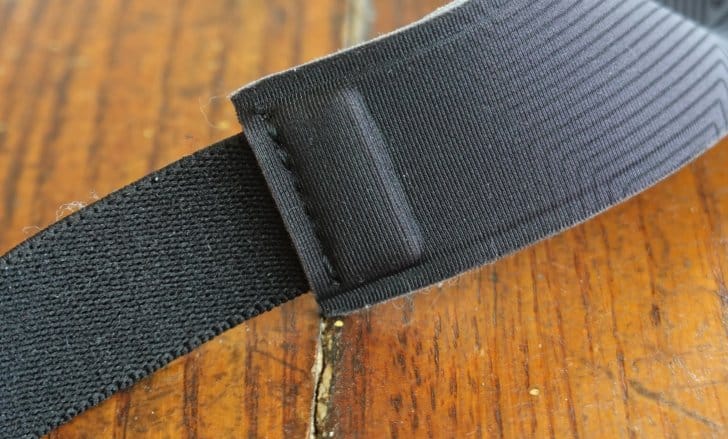
This focus resulted in two choices that make the Headlamp 200 so comfortable:
- Material choice: layered die-cut lycra is just thick and stretchy enough to be soft but thin enough to allow some moisture to pass through. Utilizing non-woven fabric here allows there to be minimal stitching and, therefore, minimal rubbing or discomfort.
- Low-profile electronic components sit flush inside a compartment with a broad, ergonomically-curved backing for superior stability in motion. This design choice effectively removes the cantilevered effect without having to overtighten the adjustment straps.
Customizable Brightness Levels
The other factor that makes the Biolite Headlamp unique in its category is its dimming function. With typical headlamps, I often find myself wanting to save battery by not using the brightest setting, but struggling to see clearly with the next-lowest brightness level. The Biolite Headlamp 200’s adjustable feature (available with both red flood and white spot modes) allows the user to dial-in a desired lumen level. Even better, a memory function retains that level after turning the light off and back on. One downside to this adjustability is that it might make it hard to guess how much battery life you have left (the Headlamp 200 does have a battery life indicator function, but I found it to be a little imprecise)
Compared To…
I wanted to compare the Biolite Headlamp 200 to another rechargeable headlamp of similar lumens, battery life, and weight. I chose the Petzl BINDI.
The Biolite Headlamp 200 vs. the Petzl BINDI
| Criteria | Comments | Edge |
|---|---|---|
| Weight | The BINDI weighs 1.23 oz (35 g) while the HeadLamp 200 weighs 1.75 oz (50 g). | BINDI |
| Brightness | Both headlamps have the same maximum brightness of 200 lumens | Tie |
| Battery Life (max burn time at highest and lowest available lumens) | The HeadLamp 200’s 700 mAh Lithium-ion battery will burn for 3 hours at max brightness while the BINDI’s 680 mAh battery will burn for 2 hours at max brightness. The BINDI has a lower minimum Lumen setting. This means it will burn for 50 hours at lowest output vs. the HeadLamp 200’s 40 hours | Tie |
| Features | Both headlamps have locking functions, red modes, strobe modes, and tiltable light panels. The BINDI’s light panel can tilt up while wearing the headlamp around the neck, while the HeadLamp 200 can only tilt down. The HeadLamp 200’s red and white modes are both dimmable for customized brightness levels, while the BINDI has four fixed brightness modes (one red and three white). | Tie (depends on your preferences) |
| Comfort | While both lamps feature ergonomically-curved designs, this curve is more pronounced on the HeadLamp 200. Additionally, the HeadLamp 200 has a more comfortable tensioning system and strap and is more stable on the forehead due to more surface area contact. | HeadLamp 200 |
| Price | The HeadLamp 200 retails for $49.95 while the BINDI retails for $59.95 | HeadLamp 200 |
| Usability | Both headlamps have lock functions and similar one-button mode cycling. Both headlamps tighten from the back instead of the side, and both adjustment systems (while different) are equally functional and intuitive. Both lamps have the same level of water-resistance (IPX4) | Tie |
Strengths
- Comfort and Stability
- Ergonomic, low-profile, streamlined design with wide backing for maximum surface area contact
- Die-cut lycra fabric with minimal stitching for comfort
- Usability
- Dimmable red and white modes for dialed in brightness or battery life control
- Brightness memory
- Low-weight and low-profile design
- Value
- Competitively-priced
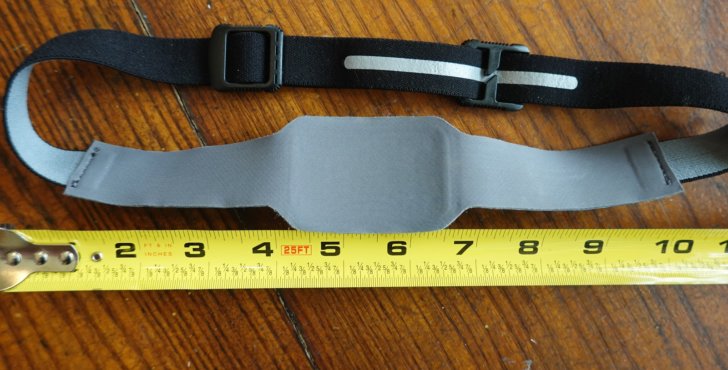
Limitations
- Battery life
- 3 hours will not be long enough for anyone needing maximum brightness for night-hiking over difficult terrain
- Brightness
- 200 Lumens will not be bright enough for anyone needing exceptional brightness for night-hiking in highly technical terrain
Where to Buy
Related Content
- Like your lighting hand-held? Roger Caffin reviewed the ThruNite Ti3 Flashlight.
- The BPL community talks about their current favorite headlamps in our forums.

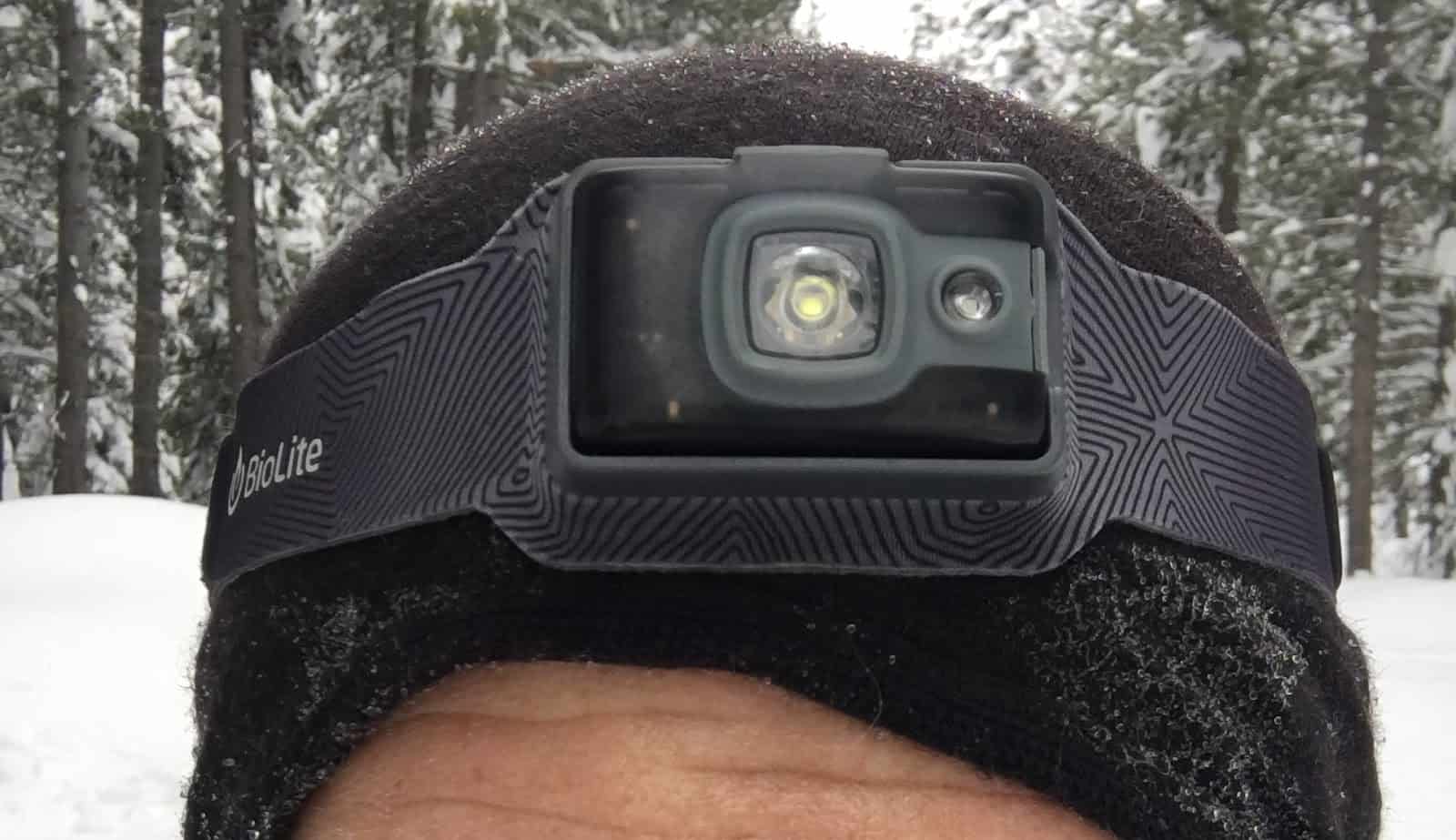


Home › Forums › Biolite Headlamp 200 Review